Malfunction of a central venous multilumen access catheter caused by kinking

Nevertheless, ultrasonographic findings did not reveal the reason for the malfunction. We found kinking in the distal part of the catheter after removing it” Cho et al (2018). Abstract: RATIONALE: A multilumen access catheter (MAC) is a large-bore catheter that prevents kinking or collapsing. Misplacement is a frequently reported complication. PATIENT CONCERNS: A 59-year-old man […]
The role of private rooms for reducing central line-associated bloodstream infections

We sought to determine whether private rooms were associated with a lower risk of central-line infections” O’Neill et al (2018). Abstract: Private hospital rooms are believed to offer some protective effect against hospital-acquired infections, including central line-associated bloodstream infections. Yet a recent meta-analysis found the evidence-base to be lacking from a policy perspective. We sought […]
Arterial blood gas sampling using pre-heparinised safety syringe

This article provides an overview of this subject area. It includes case studies where the Pulsator Plus Arterial Blood Gas Syringe (Smiths Medical) was used to safely and effectively collect blood samples for analysis” Hill and Moore (2018). Abstract: Taking arterial blood gases (ABG) is an essential part of the diagnosis and management of critically […]
Quality improvement of emergency inserted peripheral intravenous catheters

A quality improvement project involving key stakeholder engagement, the roll out of a sticker to readily identify ambulance/emergency inserted PIVCs and education of ward staff was introduced to enable identification of this high-risk group” Ruegg et al (2018). Abstract: Vascular access devices are common and necessary in healthcare provision but their use poses a significant […]
Medical device classification in vascular access

This article aims to give a simple explanation of device classification as it relates to vascular access devices. It aims to provide the reader with information to increase their knowledge and understanding of this topic” Kelly and Jones (2018). Abstract: Developments in the medical device industry are driven by a rapidly changing healthcare arena in […]
Amount of drug discarded within administration sets post infusion

The aim of this study was to quantify frequency, volume and dose of drug discarded within administration sets in the clinical setting” Cooper et al (2018). Abstract: BACKGROUND: intravenous (IV) drugs are administered widely and under-dosing can result in therapy failure. The aim of this study was to quantify frequency, volume and dose of drug […]
Clinical practice guideline intramuscular injection

This article introduces a clinical practice guideline for safe and effective aspiration during IM injection, as a follow-up to the findings of that study” Mraz et al (2018). Abstract: The intramuscular (IM) injection has been part of nursing practice since the 1960s. Over the past 60 years, the practice of aspiration during IM injection has […]
The effect of oral hydration and localised heat on peripheral vein diameter and depth

To determine the effect of localised heat and oral hydration on vein diameter and depth” Sharp et al (2018). Abstract: BACKGROUND: Accessing the peripheral veins for blood sampling and short-term peripheral intravenous catheter insertion is common in contemporary healthcare. Clinicians may apply heat or promote oral hydration to increase vein diameter and reveal veins to […]
Ultrasound guidance increases the success rate of peripheral IV cannulation
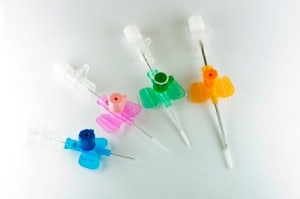
Ultrasound guidance increases the success rate of peripheral i.v. cannulation, especially in patients with known or predicted difficult i.v. access” van Loon et al (2018). Abstract: BACKGROUND: Peripheral vein cannulation is a routine and straightforward invasive procedure, although i.v. access can be difficult to obtain. To increase the success rate of inserting an i.v. catheter, […]
Rate of CRBSI between tunneled central venous catheters and PICCs

There is no formal comparison being made to study the rate of catheter-related bloodstream infection (CRBSI) between TCVCs and PICC in HPN to recommend the use of 1 over the other” Hon et al (2018). Abstract: BACKGROUND: Tunneled central venous catheters (TCVCs) and peripherally inserted central catheters (PICC) are often used for the provision of […]
Unexpected complications during insertion of a central venous catheter

During insertion of the central venous catheter, there was difficulty in advancing the guidewire. Attempts were made to remove the guidewire through the introducer, but the guidewire would not thread out of the introducer” Tirumala et al (2018). Abstract: Introduction: Central venous catheters are essential and widely used in medical practice. Their use may be […]
Infection prevention bundles with low-cost and high level of evidence

This survey aimed to determine the status of infection prevention and control (IPC) bundle practice and the most frequent interventional variables in Low-Middle Income Countries (LMICs)” Alp et al (2018). Abstract: AIM: This survey aimed to determine the status of infection prevention and control (IPC) bundle practice and the most frequent interventional variables in Low-Middle […]
Health-Related Quality of Life in Outpatient Parenteral Antimicrobial Therapy

Health-related quality of life (HRQoL) in outpatient parenteral antimicrobial therapy (OPAT) has not been well characterized in the United States” Keller et al (2018). Abstract: Health-related quality of life (HRQoL) in outpatient parenteral antimicrobial therapy (OPAT) has not been well characterized in the United States. In an OPAT cohort, the short-form-12’s median physical component score […]
Probe orientation for ultrasound-guided vascular access cannulation
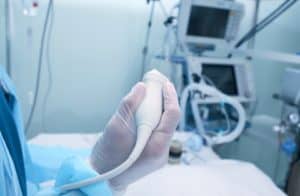
Our goal was to conduct a network meta-analysis of randomized controlled trials to compare the effects of the long-axis (LAX), short-axis (SAX), and oblique-axis (OAX) ultrasound guidance approaches for vascular access cannulation” Lv et al (2018). Abstract: BACKGROUND: Our goal was to conduct a network meta-analysis of randomized controlled trials to compare the effects of […]
Incidence and outcomes of catheter related thrombosis (CRT) in patients with acute leukemia
Patients with acute leukemia frequently develop catheter-related thrombosis (CRT) despite concurrent thrombocytopenia. The incidence, treatment and outcomes of this complication are poorly documented. We undertook this study to determine the incidence of CRT in patients with acute leukemia and assess the safety and effectiveness of a treatment strategy using a platelet-adjusted low molecular weight heparin […]
Inadvertent traumatic fracture of central venous catheter

We report a traumatic inadvertent transection of central venous catheter that migrated through a donor transplanted liver and was found to be lodged in the recipient’s right ventricle. The catheter was retrieved under fluoroscopy using a trilobed snare device” Obaid et al (2018). Abstract: Central venous catheters play a pivotal role in the perioperative support […]
Patients with diabetes are at higher risk of recurrent catheter-related thrombosis

Fibrinolysis is one of the methods extending the use of vascular access in patients with tunneled venous catheters thrombosis. The aim of this study was to assess one-year maintenance of tunneled catheters patency after first effective thrombolysis with urokinase and identify its predictors” Wójtowicz et al (2018). Abstract: INTRODUCTION: Fibrinolysis is one of the methods […]
Guidelines ensure phlebotomy is a safe and patient-centered procedure
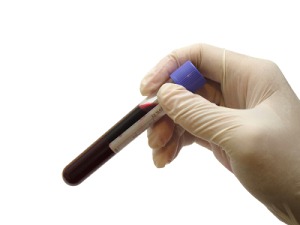
It offers guidance on the requirements for ensuring that blood collection is a safe and patient-centered procedure and provides practical guidance on how to successfully overcome potential barriers and obstacles to its widespread implementation” Simundic et al (2018). Abstract: This document provides a joint recommendation for venous blood sampling of the European Federation of Clinical […]
Lightly embalmed cadavers for simulation in US-guided procedures

As a feasible alternative, we describe the innovative use of a lightly embalmed cadaver for realistic practice of common interventional radiology (IR) procedures prior to direct patient care” Meek et al (2018). Abstract: RATIONALE AND OBJECTIVES: Competency in ultrasound (US) imaging and US-guided procedures is often difficult for medical students and residents to master. The […]
In vitro study of 0.01% hypochlorous acid as an alternative skin antiseptic

Compare the in vitro efficacy of hypochlorous acid 0.01% (HA), povidone iodine 5% (PI), chlorhexidine gluconate 4% (CHG), and isopropyl alcohol 70% (IPA) against common skin microorganisms” Anagnostopoulos et al (2018). Abstract: OBJECTIVE: Compare the in vitro efficacy of hypochlorous acid 0.01% (HA), povidone iodine 5% (PI), chlorhexidine gluconate 4% (CHG), and isopropyl alcohol 70% […]
Internal jugular venous valve as a cause of difficult central venous access
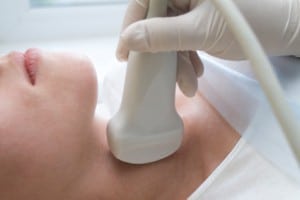
We report the case of a patient in whom the presence of a valve in the internal jugular vein did not permit a vascular access to be obtained through this vessel” Ciércoles Ramírez et al (2018). Abstract: Central venous cannulation is a commonly performed procedure in the hospital setting, while the internal jugular vein is […]
Totally implantable port with a Mycobacterium fortuitum infection

However, Mycobacterium fortuitum, a predominant organism, in catheter-associated infections, has rarely been documented in totally implantable venous access port (TVIAP)-associated bloodstream infections” Ye et al (2018). Abstract: RATIONALE: Rapidly growing mycobacteria (RGM) are well-known causative agents of human infections, particularly in immunocompromised hosts. However, Mycobacterium fortuitum, a predominant organism, in catheter-associated infections, has rarely been […]
Eye tracking offers the possibility of reducing the incidence of needlestick injuries
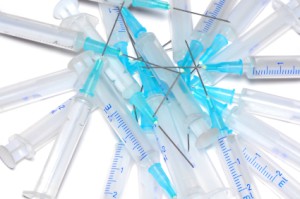
Novice health care students suffer more needlestick injuries (NSIs) than experts. NSIs may be prevented by learning experts’ behavior during this procedure. Eye tracking offers the possibility to study both experts’ and novices’ eye behavior during this task” Sanchez et al (2018). Abstract: BACKGROUND: Novice health care students suffer more needlestick injuries (NSIs) than experts. […]
Ultrasound-guided liposuction for hidden arteriovenous fistulas in obese patients
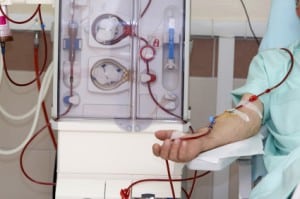
To achieve reliable puncturability, there are several surgical solutions. Superficialization with mobilization is common. With some newer options (lipectomy and liposuction) subcutaneous adipose tissue is surgically reduced. There are only a few authors who have published their experience with liposuction and we want to add our own results” Cs Nagy et al (2018). Abstract: BACKGROUND: […]
Large pseudoaneurysm of the neck related to central venous catheter placement
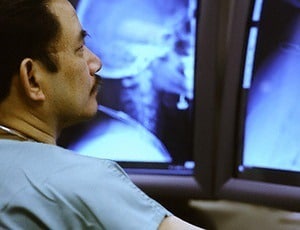
A 33-year old woman with suspected pulmonary embolism, developed a pseudoaneurysm of the neck three days after a CVC placement in the right internal jugular vein, determining compression to adjacent neck structures” Palermo et al (2018). Abstract: RATIONALE: Central venous catheter (CVC) placement, particularly in emergency setting, may be associated with significant morbidity and mortality. […]
Approaches to infection prevention in the neurointensive care unit

We conducted a systematic review of studies targeting adult patients in neuro-intensive care units (neuro-ICUs) with an intervention designed to prevent ICU-acquired infections” Lord et al (2018). Abstract: Hospital-acquired infections are common in neurointensive care units. We sought to review interventions which may reduce infection rates in neurocritically ill populations. We conducted a systematic review […]
Percutaneous vascular access system for hemodialysis catheters

The DermaPort™ system can be effectively implanted and facilitates catheter interventions in hemodialysis patients requiring long-term catheter use and has a lower infection rate than historical catheter infection rates” Rajan et al (2018). Abstract: INTRODUCTION: Dysfunctional or infected hemodialysis polyester-cuffed catheters often require removal and are dissected out. The DermaPort™, percutaneous vascular access system (PVAS) […]
Direct cost of maintenance of totally implanted central venous catheter patency

To identify the average direct cost of maintaining the patency of totally implanted central venous catheter with heparin at a Day Hospital of a public hospital of high complexity specialized in the treatment of cancer patients, and estimate the average direct cost of replacing heparin with sodium chloride 0.9%” Homo and Lima (2018). Abstract: OBJECTIVE: […]
Arteriovenous shunts as venous access in children with haemophilia

Arteriovenous shunts provide a good alternative to CVAD and carry a lower risk of complications. AVSs allow earlier start of prophylaxis and home therapy with an improved quality of life for patients and families” Them et al (2018). Abstract: INTRODUCTION: Venous access is essential in patients with haemophilia for administration of factor concentrates. Peripheral venipuncture […]
Post-exposure prophylaxis following occupational exposure to HIV and hepatitis B

We aim to examine the utilisation and outcome of post-exposure prophylaxis (PEP) for both HIV and hepatitis B (HBV) among HCWs” Abubakar et al (2018). Abstract: BACKGROUND: Healthcare workers (HCWs) have an increased risk of occupational exposure to blood-borne pathogens. AIMS/OBJECTIVES: We aim to examine the utilisation and outcome of post-exposure prophylaxis (PEP) for both […]

